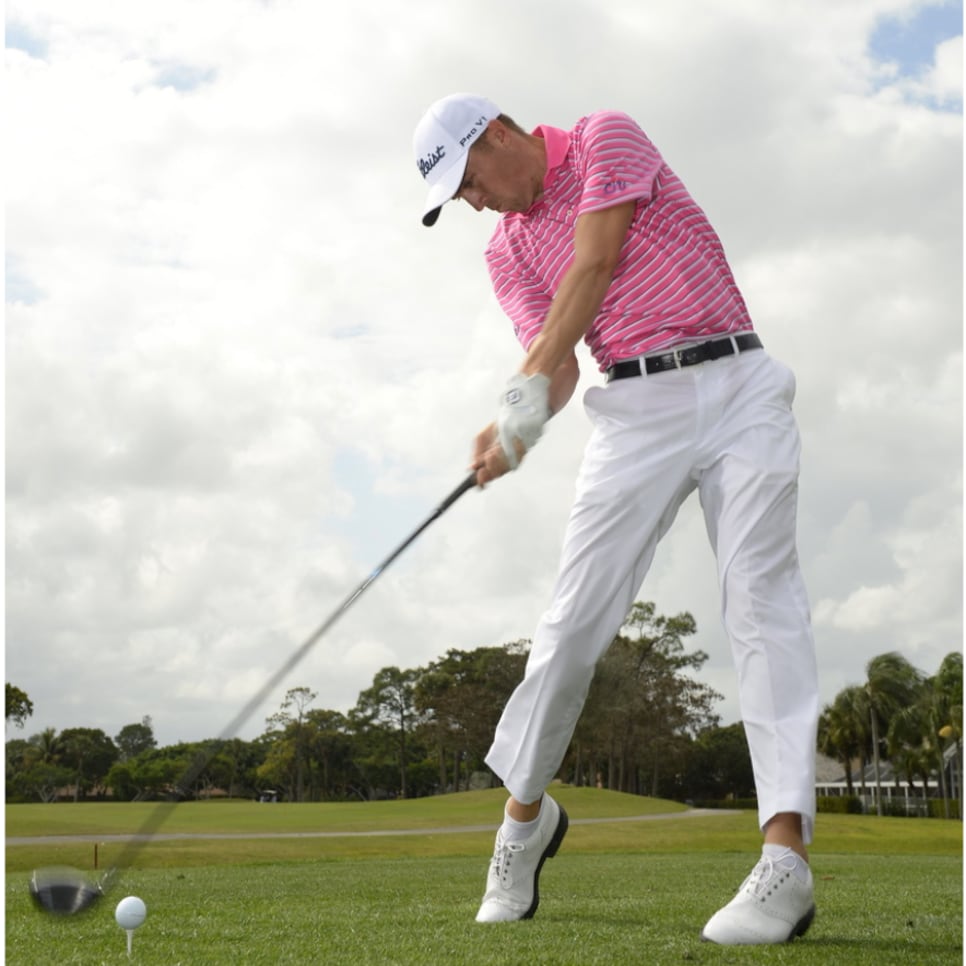First, let’s get one thing straight: no, you shouldn’t be thinking about all these things as you swing – unless you want to have your head so scrambled that you can’t hit the golf ball.
Instead, think of these as some general golf swing guidelines. Best practices that are useful to know, because they can help you identify an issue in your golf swing.
So look at the charts below. It’s golf swing data sourced from male and female pros via the 3D golf swing app SportsBox AI. There’s a lot there, but don’t fret. We’ll explain something you can learn from each, one by one.

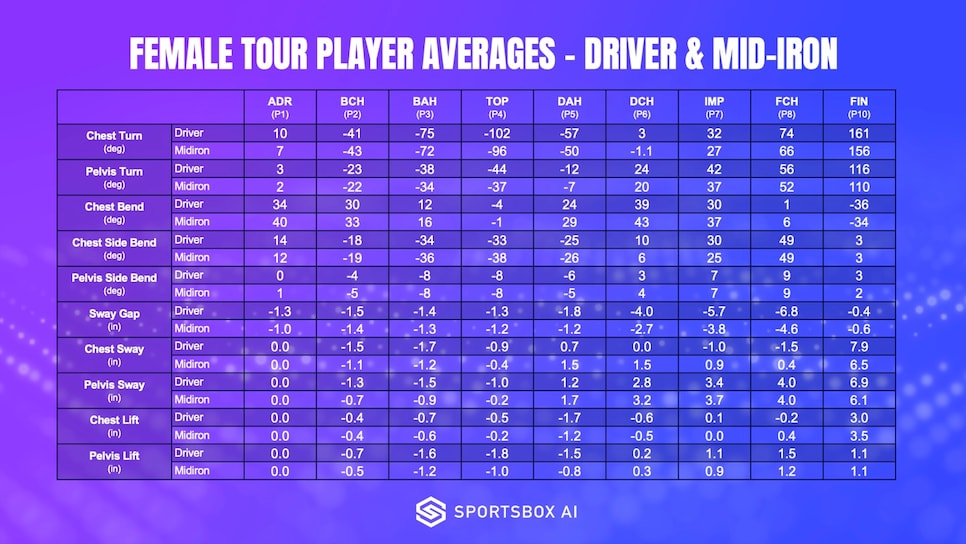 1. Turn your back to the target
1. Turn your back to the target
Key stat: Chest Turn
In the first row of the above charts, notice that the average male and female tour player have turned their chest -98 degrees and -102 degrees away from the target by the time they reach the top of their backswing.
It’s important not to make a fake turn (we’ll explain why next), but make no mistake: the pros make a huge turn with their body on the backswing. A good feeling that may help the rest of us is that we’re trying to turn our chest away so much that our back faces the target at the top of the backswing.
2. Load trail hip, then explode through
Key stat: Pelvis Turn
In the next row you’ll see something interesting: that golfers turn their pelvis less than their shoulders at the top of the backswing (about -40 degrees, compared to -100 degrees above), but that by impact, their pelvis has turned more than their chest (40 degrees vs 30 degrees).
Turning your hips on the backswing is a good thing. But over-turning them is like trying to snap an elastic band while holding it loose. You’ve lost all that good tension, because while you may have turned your hips, you haven’t actually loaded them. You’re faking your turn (read more on that here).
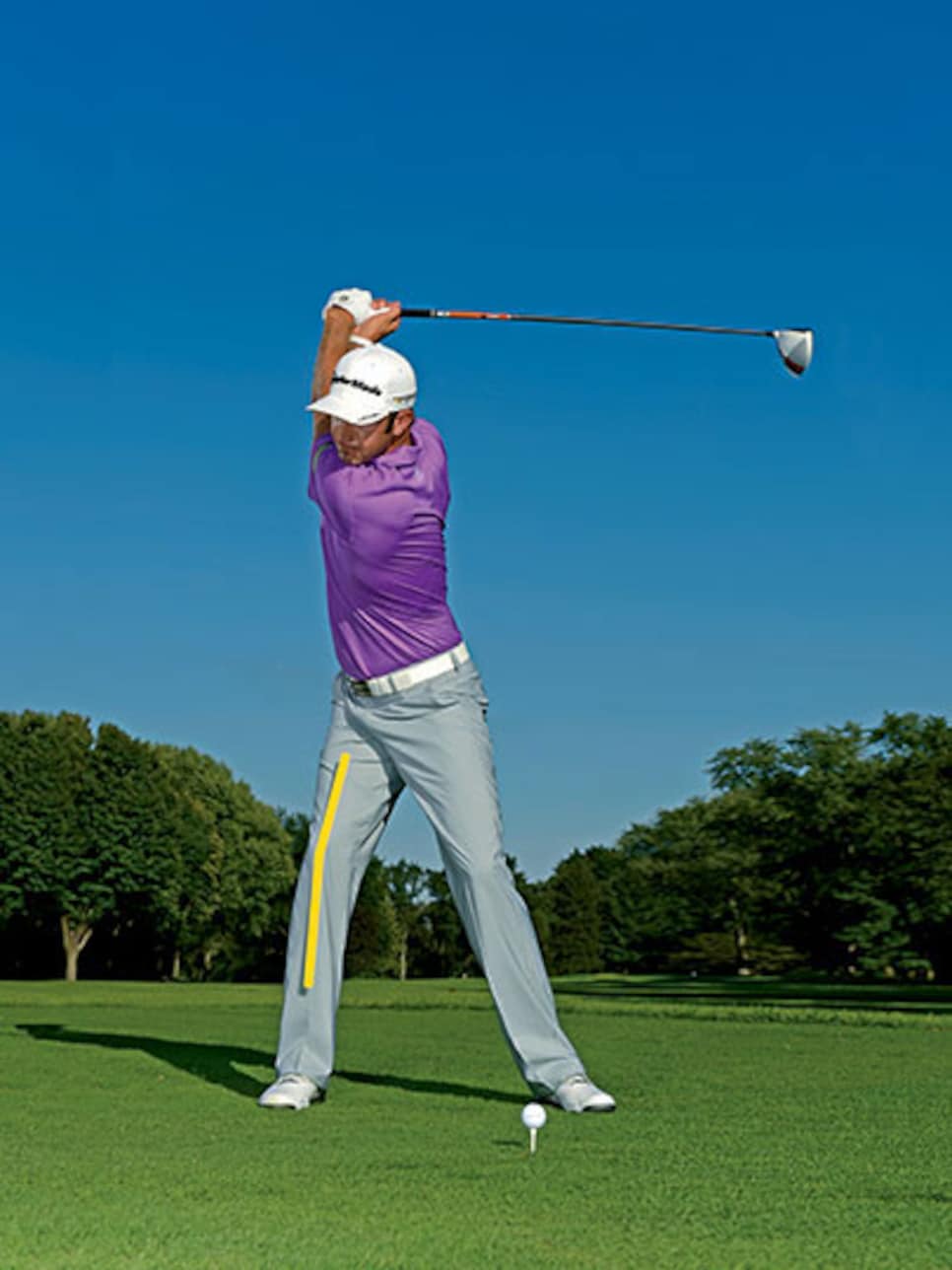
3. Chest around and up
Key stat: Chest Bend
The closer your chest is to the ground, the more chest bend you have. You’ll notice that at setup and impact there’s a healthy amount of it: about 30 degrees of chest bend. But notice that at the top of the backswing, and during after impact, golfers lose almost all their chest turn.
To understand why, adopt Collin Morikawa’s key feel: feel your chest stretch towards the sky on the backswing and follow through. Keeping too much chest bend can lock you up; stretching your chest towards the sky, he says, helps increase your range of motion and allows you to turn more freely.
4. Tilt away at setup
Key stat: Chest Side Bend
A lot of golfers tend to smother the ball with their upper body at setup, and to do it even more at impact. But look at the pros: male and female tour players tilt their upper body away from the target at setup. They have about 15 degrees of chest side bend at setup, which increases to more than 30 degrees by impact.
A little tilt away from the target at setup gives you an important head start, and can help you hit up on the ball off the tee for more distance.

5. Left hip below right hip
Key stat: Pelvis Side Bend
Now look at Pelvis Side Bend numbers, and you’ll notice that the hips go from essentially level at setup to minus eight degrees at the top of the backswing (meaning your left hip goes down as your right goes up), which then reverses to eight degrees at impact (meaning your right hip goes down while your left goes up).
Much like your shoulders, when your hips turn too level golfers will struggle to create a powerful turn, and hit the ball on a descending blow – which is critical for crispy contact.
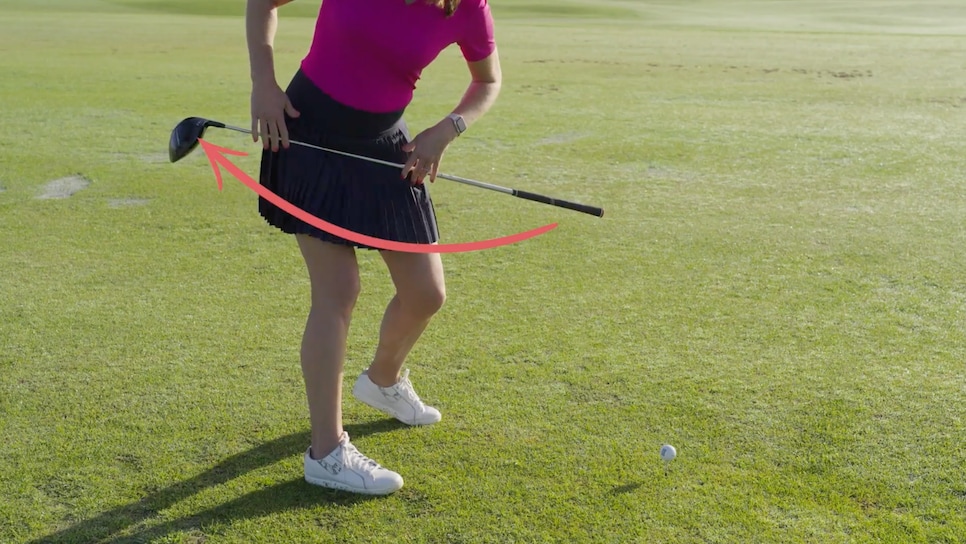 6. Hips forward head back
6. Hips forward head back
Key stat: Sway Gap
Sway Gap is pretty simple to understand. But it’s very important. Sway Gap measures the difference between your upper and lower body. Male pro golfers have a Sway Gap of more than 6.5 inches by impact – meaning their lower body is 6.5 inches more towards the target than their upper body at impact.
Amateur golfers tend to have a much smaller Sway Gap, which is generally a sign that the key parts in your swing are moving in the wrong order. It can cause all sorts of issues.
7. Limit the sway of your chest
Key stat: Chest Sway
Your chest should turn and lift as you swing, as we explain, but it really shouldn’t sway back and forth. At least not much. Look at the pros, and you’ll see with their driver, their chest sways away from the target just two inches on the takeaway, but quickly returns to either side of zero until after the ball is gone.
Yes, their hips move towards the target (that’s what creates a Sway Gap) but the chest should stay in roughly the same place. When it doesn’t, the bottom of your swing is moving all over the place. When that happens, the ball could go anywhere.
8. Recentring then shift
Key stat: Pelvis Sway
Unlike your chest, tour players’ pelvis does move pretty significantly from side-to-side as they swing. It doesn’t slide too far away from the ball (less than a couple of inches) but moves upwards of five inches towards the target by impact.
That’s good! It helps with compression, golf swing sequencing, and all sorts of other fancy-sounding things. But in order to get your hips that far ahead of the ball by impact, you have to start moving them early. It’s a move called recentring, and it’s really important.
 9. Beware chest bobbing
9. Beware chest bobbing
Key stat: Chest Lift
As you’re doing all that turning, tilting, and bending as part of making a normal golf swing, it seems natural that there’ll be some up-and-down movement of your chest.
That’s true! But some is the key word here. The chest lift data from tour players shows their chest drops down just two inches mid downswing, before their chest rises back up about an inch through the ball. In short: If your chest is bobbing wildly up and down as you swing, you’re doing it wrong.
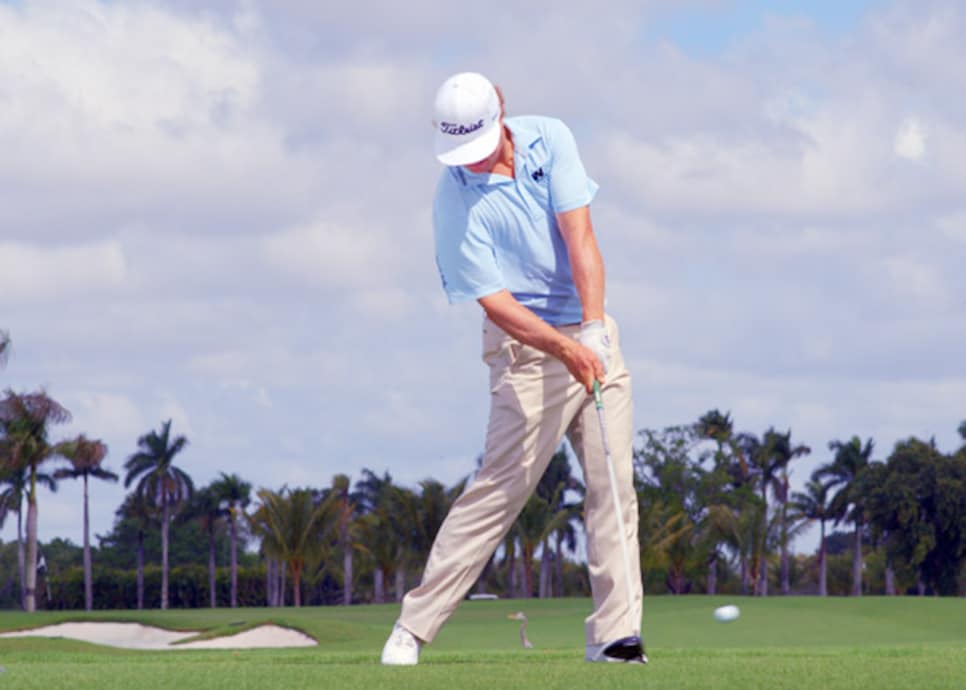 10. Explode off the ground
10. Explode off the ground
Key stat: Pelvis Lift
Thanks to new technology, coaches understand better than ever how golfers push and pull against the ground as they swing.
They’ve come to understand along the way how a key power source is golfers’ ability to push down into the ground, then launch themselves off it. Tour players are elite at this, and it shows up in their pelvis numbers. Early in the downswing the pelvis is almost two inches lower than it started, but by impact, their pelvis is one inch higher than where it started.
